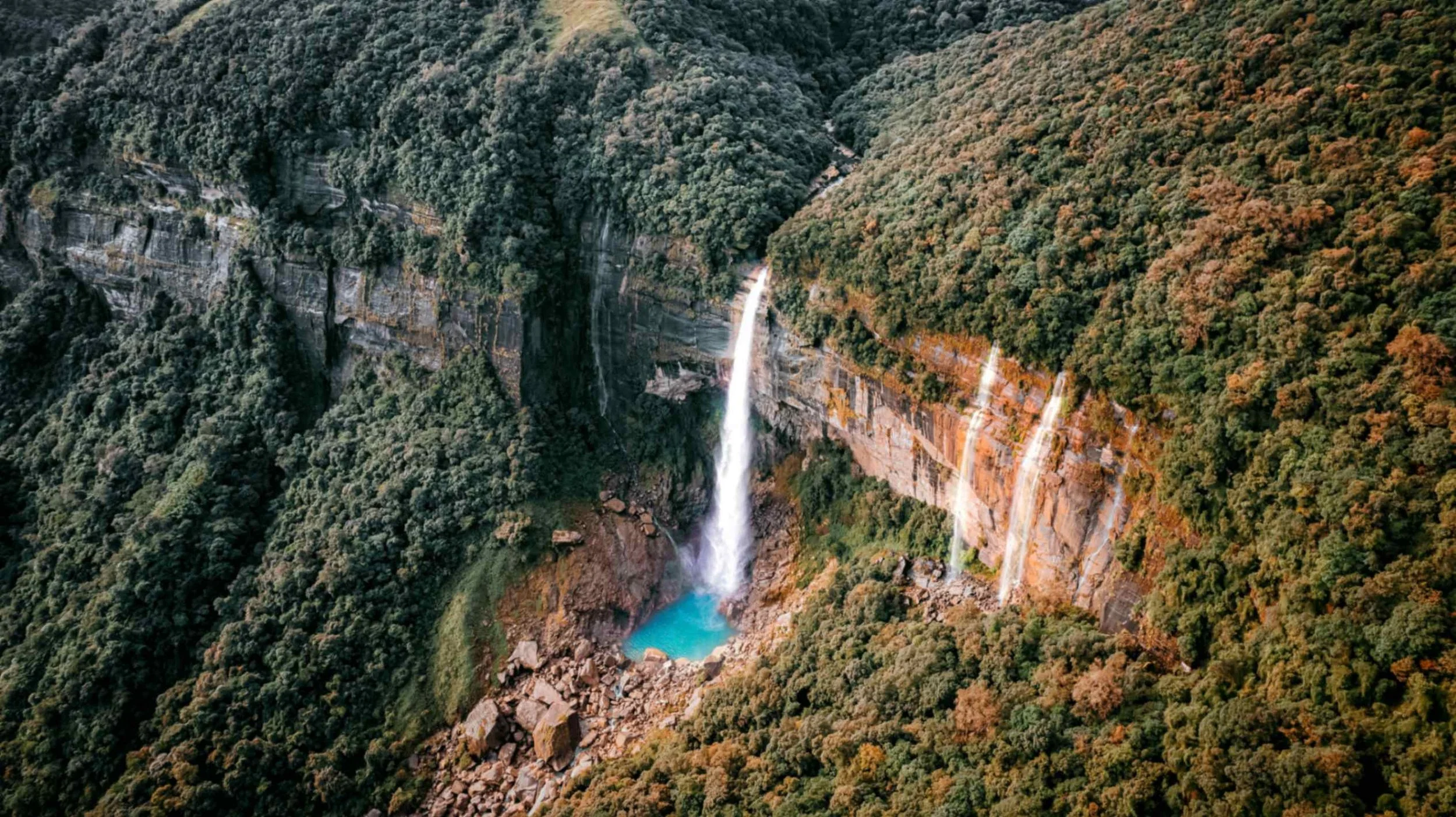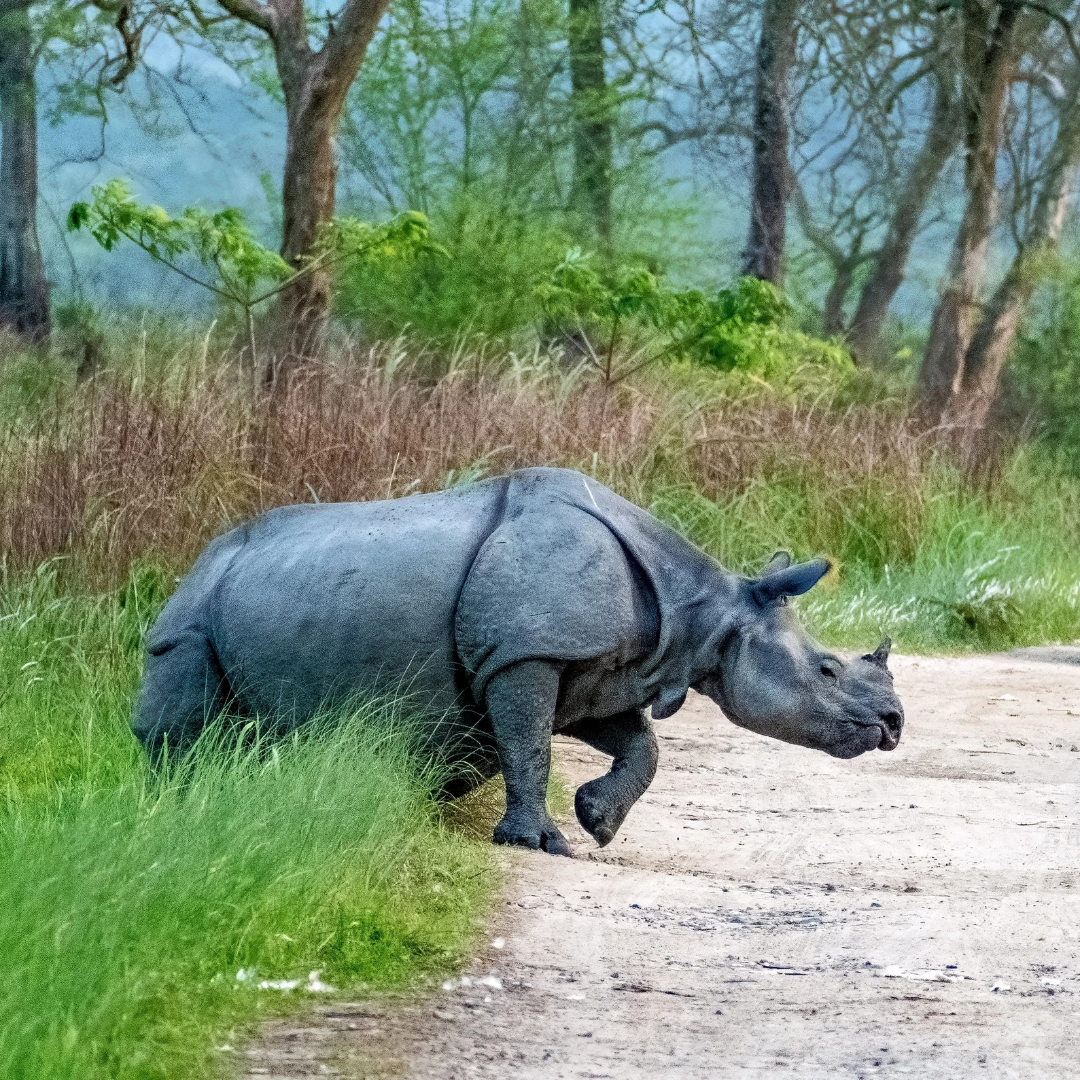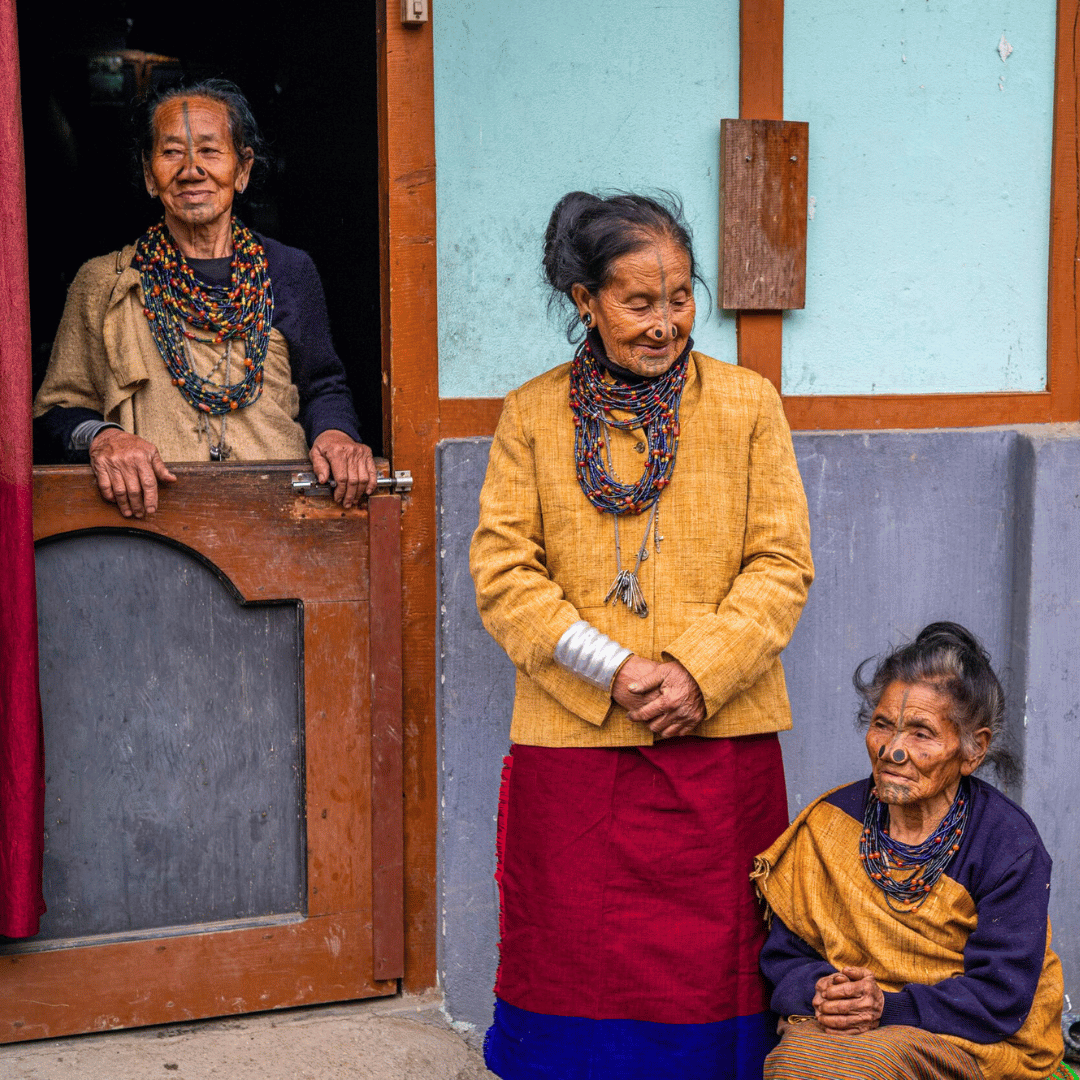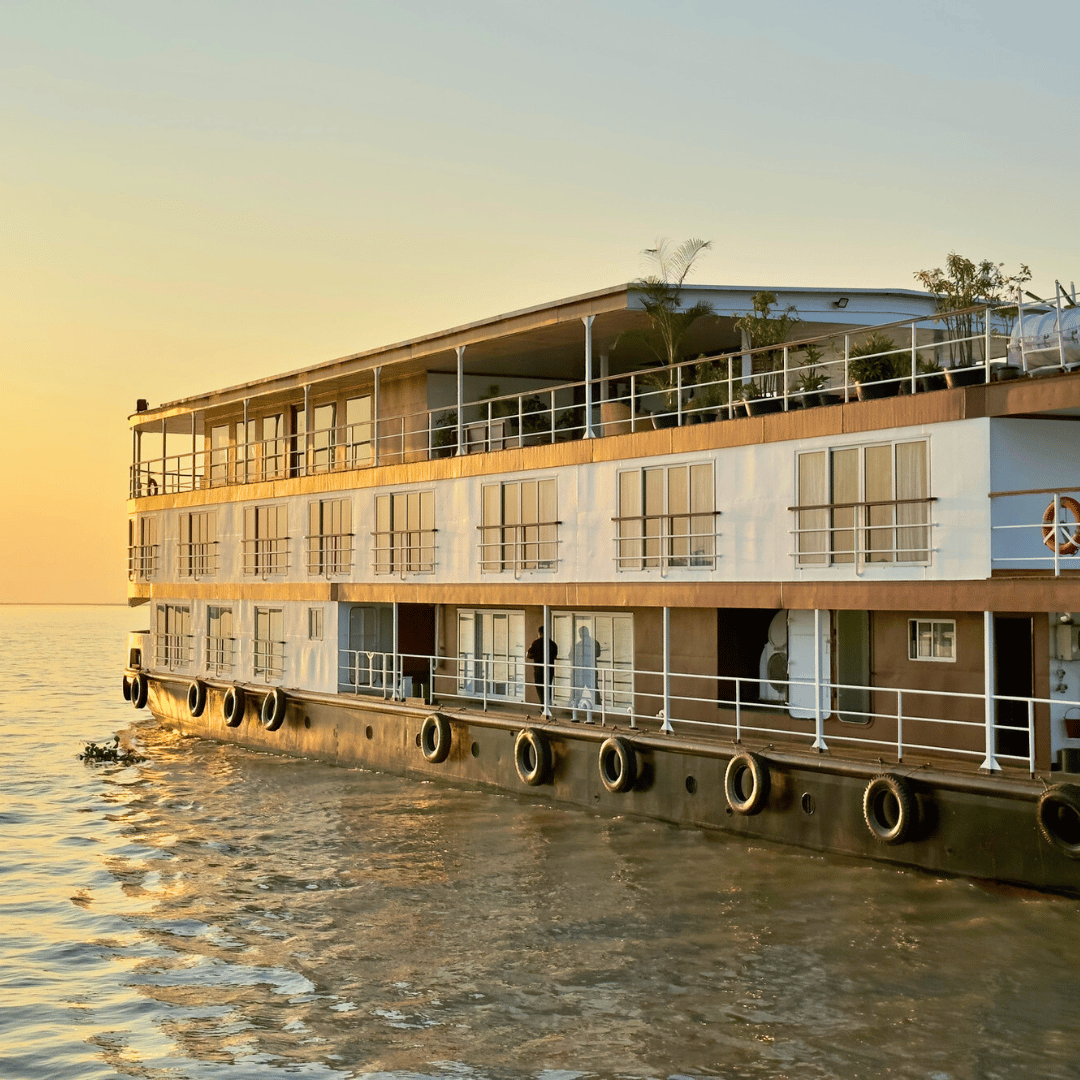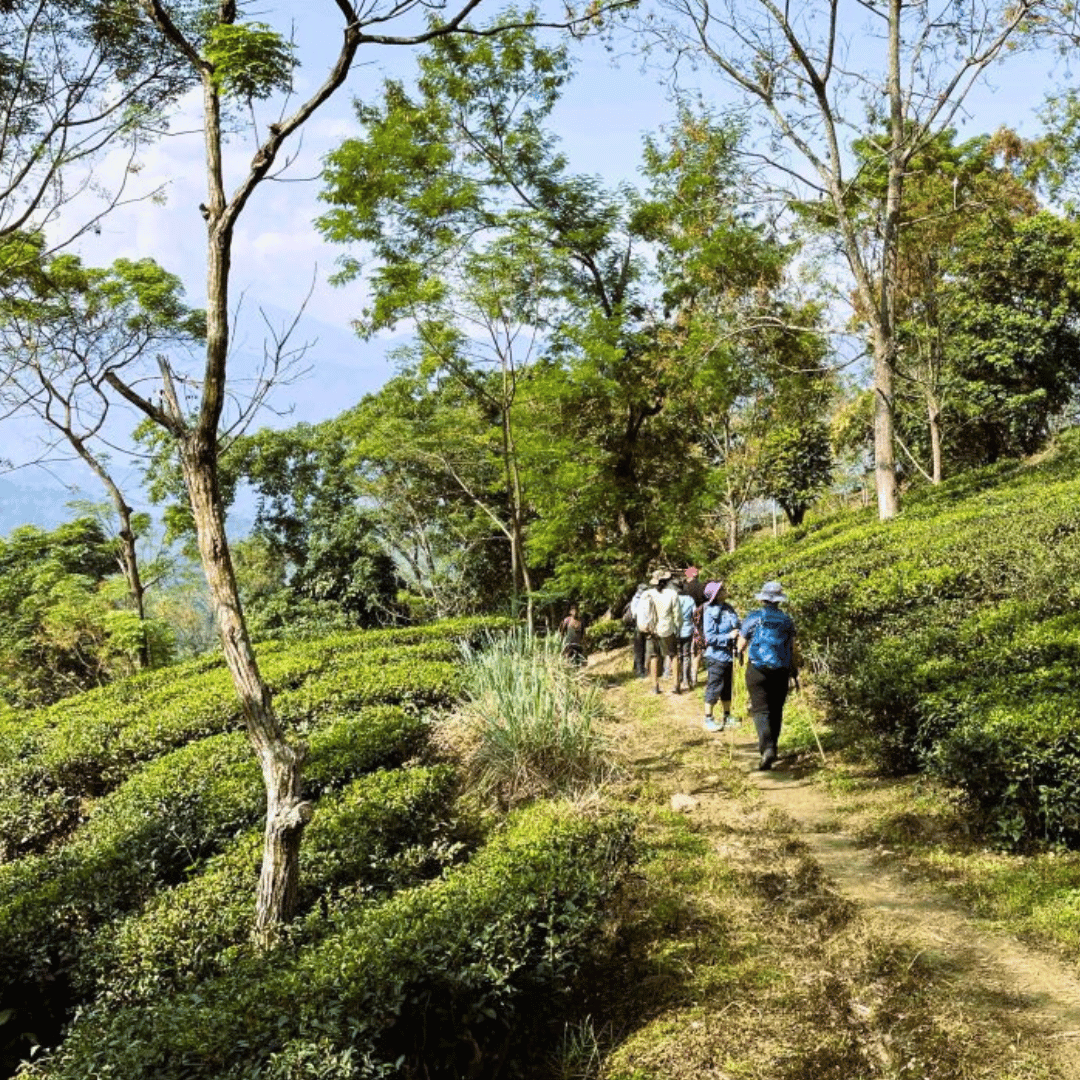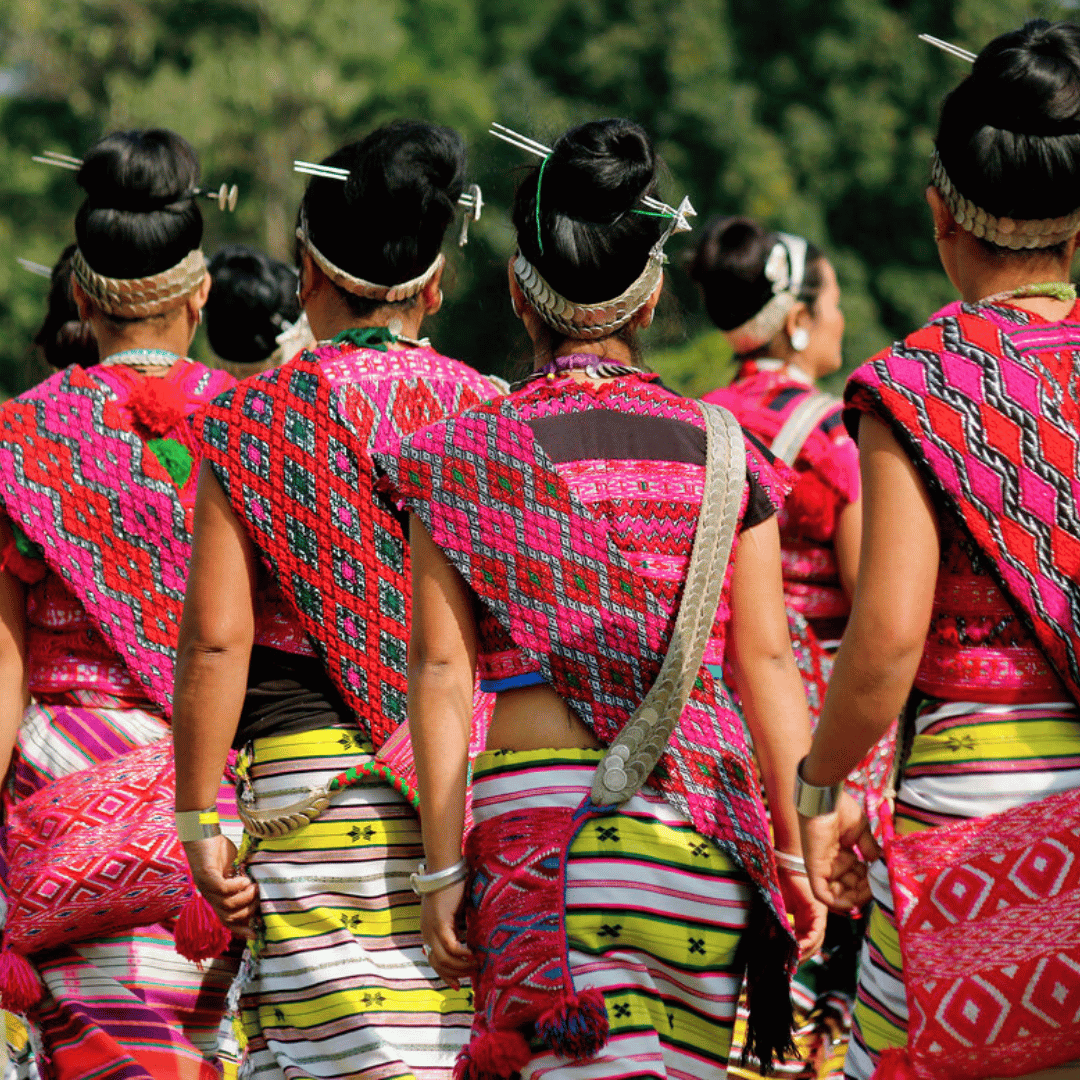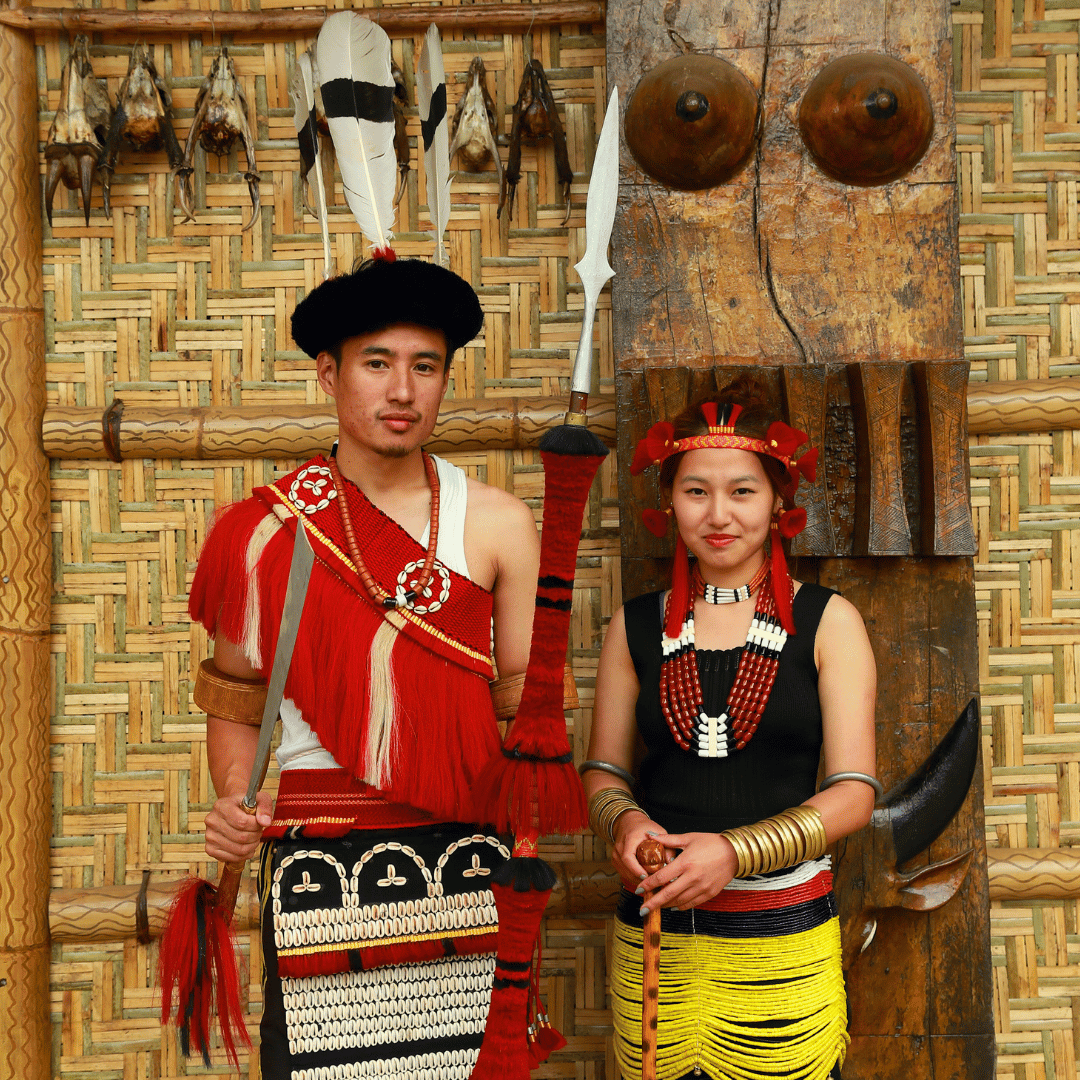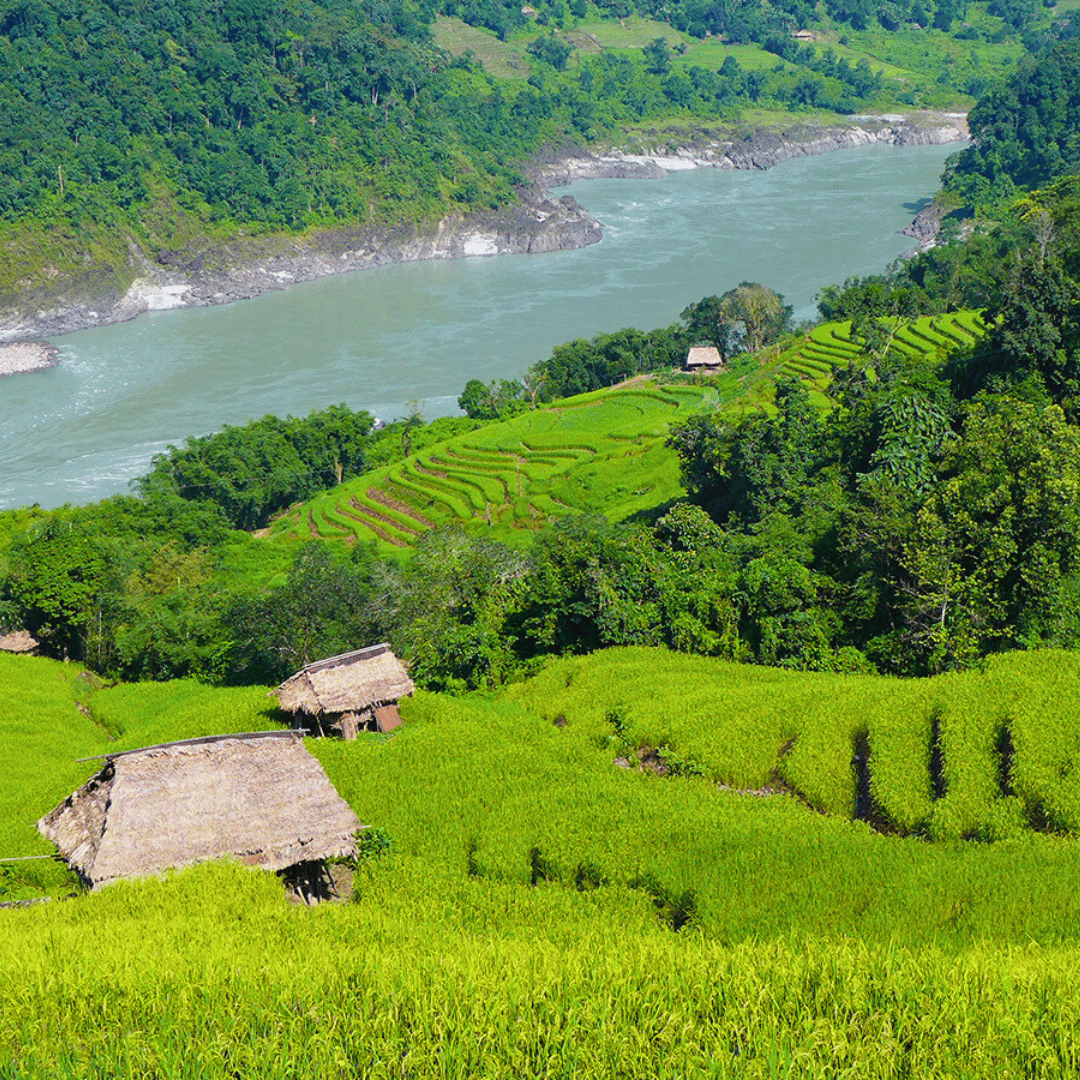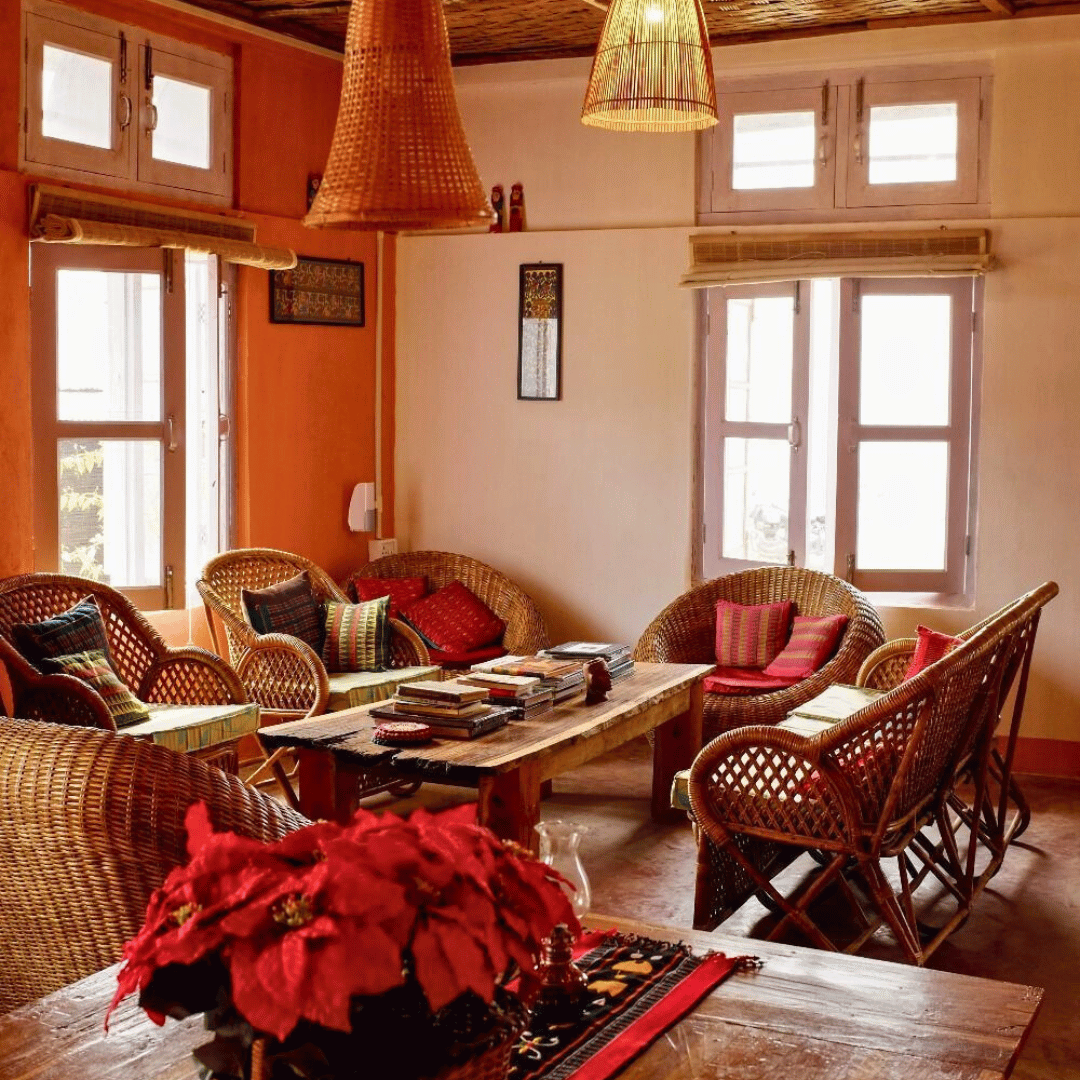
Private North East India Tours
Bespoke Packages Crafted With Care
North East India is a region of extraordinary biodiversity, layered tribal cultures and lush riverine landscapes, offering a very different perspective of India to travellers seeking depth beyond the well-trodden routes. From the rolling tea estates and wildlife-rich floodplains of Assam to the sacred forests and living root bridges of Meghalaya, and the traditional hill communities of Nagaland, the region blends nature, culture and tradition in equal measure. Kaziranga National Park is globally known for one-horned rhinoceros and birdlife, while Shillong and Cherrapunji carry Khasi heritage and dramatic monsoon-carved scenery. Majuli Island on the Brahmaputra tells stories of Vaishnavite monasteries and river culture. Fully customised North East India tours with India Unbound focus on immersive village stays, nature walks, tea garden experiences and cultural encounters guided by local experts. We’re Melbourne-based, and have been designing private journeys across India since 2007 - with private drivers, expert local guides and boutique stays that give Australian travellers a genuine sense of place in one of India’s least explored regions.
Choose Your North East India Travel Style
North East India Travel Advice For First Time Visitors
-
North East India feels unlike anywhere else in the country, both geographically and culturally. The region includes Assam, Meghalaya, Nagaland and Arunachal Pradesh, shaped by forested hills, tea estates, sacred rivers and living indigenous traditions. It is quieter, less commercial and more nature focused than mainstream India. Travel here is about immersion, curiosity and local connection rather than rushing between well known monuments.
This is one of the most culturally diverse areas in Asia, home to hundreds of tribal communities with distinct languages, festivals, textiles and food traditions. Customs vary from village to village, so cultural sensitivity matters. Always ask before taking photos, dress respectfully and follow local guidance rather than assuming familiarity. Encounters are genuine and not staged for visitors, which makes travel here deeply rewarding.
Some areas in states such as Arunachal Pradesh and Nagaland require a government permit to enter. These are easily arranged in advance through a specialist, and the areas that are open to visitors are broad and welcoming. A few remote border zones are restricted for protection, but the region is accessible to respectful travellers and does not feel closed or difficult.
Travel unfolds at a slower pace. Roads may be winding due to terrain or weather, and even short distances can take several hours by car. Accommodation ranges from boutique lodges to community stays in rural locations. Flexibility is helpful, as plans may adjust based on local conditions, and embracing this rhythm is part of the experience.
North East India suits travellers who value authenticity over polish. Expect cultural depth, ecological diversity and human connection rather than performance. It offers a rare chance to engage with an India that is still entirely local and intact, open to those who arrive with patience, interest and respect.
-
North East India is made up of eight states that are sometimes collectively called the Seven Sisters and their brother. These are Assam, Meghalaya, Nagaland, Arunachal Pradesh, Manipur, Mizoram and Tripura, with Sikkim added as the eighth state in later years.
Each state has its own distinct identity. Assam is known for tea plantations and river landscapes along the Brahmaputra. Meghalaya is famous for living root bridges, misty hills and monsoon forests. Nagaland and Manipur are rich in tribal heritage and traditional festivals that continue to be part of everyday life.
Arunachal Pradesh is the most remote and mountainous of the region, bordering Bhutan, Tibet and Myanmar, with dramatic valleys and culturally protected villages. Mizoram and Tripura are smaller hill states with strong community based cultures and unique regional food traditions. Sikkim, though often associated with the Himalayas, is officially part of the North East.
While these states are linked geographically, they are not culturally uniform. Languages, beliefs, food, dress and even housing styles can change completely within a few hours of travel. This is part of what makes the region so fascinating to explore.
Understanding the diversity between the states helps travellers plan journeys that match their interests, whether cultural immersion, nature walks, tea country or local festivals. An India travel specialist like India Unbound can also advise the best routing, as flight connections and driving times vary widely between regions.
-
There is no single language spoken across North East India. The region is home to hundreds of indigenous languages belonging to diverse ethnic groups, many of which are spoken only within specific tribes or valleys. Assamese is the main language in Assam, while Khasi and Garo are spoken widely in Meghalaya, and languages such as Ao, Angami and Sumi are found across different parts of Nagaland.
Hindi and English are commonly used for communication between communities, especially in cities, airports and government administration. English is often spoken more than Hindi in Meghalaya, Nagaland and Mizoram, where schooling has followed an English based system for generations. In Assam, both Assamese and English are used, and most people will understand basic Hindi.
In rural or tribal areas, local languages dominate daily life and English or Hindi may not be spoken at all. In these places, travel is best done with a local guide who speaks the community language and can help facilitate genuine exchange without imposing on local customs or privacy.
Language is closely tied to cultural identity in the North East, and communities take pride in preserving their mother tongue. Many languages do not exist in written form and are passed down orally, often through song, folklore and seasonal rituals rather than formal education.
Travellers are not expected to speak the local language, but showing interest and learning a few greetings is always appreciated. It signals respect and helps open conversations that go beyond transactional interaction, which is key to meaningful travel in this region.
-
The best time to visit most parts of North East India is from October to April, when the weather is generally dry, clear and comfortable for travel. This is after the heavy monsoon has passed and before the pre summer heat builds. Winter months from December to February can be cold in higher altitude areas such as Meghalaya and Arunachal Pradesh, but days are mostly sunny with crisp air and open views.
Monsoon season, roughly from June to September, brings very heavy rainfall, especially in Meghalaya which is one of the rainiest regions on earth. During this time, some roads may be difficult to navigate and landslides can occur. However, the landscape is at its greenest and waterfalls are at full strength, so travellers who enjoy dramatic nature and do not mind rain may still find it rewarding.
In Assam and the plains, temperatures are mild from November to February and begin to warm from March onwards. Wildlife viewing in parks such as Kaziranga is excellent from December to April before the grass grows tall. Cultural festivals such as Hornbill Festival in Nagaland take place in early December and attract travellers interested in traditional dance, craft and music.
Late spring, from April to early May, offers comfortable weather in many hill regions, with blooming forests and pleasant temperatures. This period is ideal for light walking, village visits and photography before the onset of rain.
Each state has slightly different seasonal patterns, so the ideal time depends on your interests and travel route. A specialist can recommend the right month based on whether your focus is culture, nature, wildlife or festivals, ensuring the journey aligns with the local rhythm rather than the peak of the monsoon.
-
Clothing in North East India should be comfortable, modest and adapted to the climate of the specific area you are visiting. Lightweight layers work best, as temperatures can shift between cool mornings, warm afternoons and misty evenings, especially in the hills. In Assam’s plains, the weather can be warmer and more humid, while higher regions such as Meghalaya and Arunachal Pradesh can be cool even in the dry season.
Modest clothing is important out of cultural respect, particularly in rural areas and during visits to villages, monasteries or local festivals. Shoulders and legs should be covered, and clothing should not be overly fitted or revealing. A light scarf is useful for entering religious spaces or for added warmth in the evenings.
Footwear should be practical rather than formal. Comfortable walking shoes or sandals with good grip are recommended, as many paths may be uneven or natural, especially around forests, villages or river areas. Slip on shoes are useful for visits to temples or homes where shoes are removed before entering.
Rain protection is essential in the monsoon or shoulder periods. Even during the dry season, light rain or mist can occur without warning, particularly in Meghalaya. A compact rain jacket or poncho is advisable, and quick drying fabrics are generally more practical than heavy cotton.
Traditional dress is an important expression of identity across the region, and visitors are not expected to wear local clothing. However, showing interest in local textiles or wearing respectful attire is appreciated. Dressing simply, with practicality and cultural awareness in mind, allows travellers to engage more naturally with the communities they visit.
-
Food in North East India varies widely between states and communities, with strong influences from tribal, Himalayan and South East Asian traditions rather than the classic curries associated with mainstream Indian cuisine. Rice is the staple across the region, often served with local vegetables, herbs and fermented ingredients that reflect the landscape and climate. The flavours are generally lighter, cleaner and more earthy than rich or heavily spiced preparations found elsewhere in India.
Assamese cuisine includes home style dishes such as fish cooked with mustard, fresh herbs and seasonal greens. In Meghalaya and Nagaland, smoked meats, bamboo shoot based dishes and fermented soybean pastes are common, usually cooked slowly over wood fire in village kitchens. Pork is widely eaten across many communities, though vegetarian meals are also easy to find and often based on regional produce.
Most ingredients are sourced from nearby farmland or forest, with seasonal vegetables such as fiddlehead ferns, wild mushrooms and fresh ginger appearing regularly. The level of chilli varies by region. Some areas prefer mild flavour, while others, especially parts of Nagaland, favour deeper heat.
Tea is central to daily life in Assam and is often served in a light, aromatic style rather than strong and heavily sweetened. In some tribal communities, local rice beer may be offered as part of cultural hospitality, shared respectfully in a ceremonial manner rather than presented as commercial alcohol.
Travellers should approach food with openness, as dining is often centred on home cooked meals rather than formal restaurants. With guidance from a knowledgeable host or specialist, tasting local dishes becomes an important and memorable way to understand the culture of North East India.
-
Most international travellers fly into Kolkata before continuing into the North East on a domestic flight to Guwahati, Imphal or Dibrugarh. This adds a travel day at the beginning and end of the journey, which is important to factor into the overall plan. The region is not suited to fast movement, and building in time for transfers makes the experience more relaxed and realistic.
A minimum of ten to twelve days on the ground is recommended. Travel between destinations can be slow due to winding mountain or rural roads, and the experience is best enjoyed at an unhurried pace. With this amount of time, travellers can explore two or three areas such as Assam tea country, the living root bridges of Meghalaya and select cultural routes in Nagaland or Arunachal Pradesh.
Those looking for a deeper immersion often plan around two to three weeks. This allows time to combine wildlife in Assam, cultural villages in Nagaland or Arunachal, and scenic hill landscapes, while also attending festivals or spending meaningful time in local communities. It also provides flexibility to adjust routing in response to weather or unforeseen local events.
Shorter trips of around one week are possible when focused on a single state, such as Meghalaya or Assam, but are best suited to travellers with a clear and narrow interest, such as nature, tea history or tribal culture. Even in a shorter itinerary, the rhythm remains slower than urban India and shaped by terrain and local logistics.
North East India rewards patience. It is not a destination for rapid sightseeing but for travellers who value depth, conversation and a sense of discovery. Allowing sufficient days ensures the journey feels enriching rather than rushed and leaves room for the unexpected encounters that often become the most memorable part of the experience.
Popular Destinations In North East India
Create Your North East India Tour With India Unbound
Established in 2007, India Unbound is an award-winning travel company specialising in custom-made journeys and private tours to India. With more than two decades of experience exploring this fascinating nation, we create tailor-made itineraries for discerning travellers looking for a real adventure.
When you start to research a trip to India, it’s easy to feel overwhelmed by the seemingly endless possibilities. At India Unbound, we’ve made this process easy. To see India, we simply need you to tell us relevant information about yourself and the type of travel experience you are looking for - whether it’s a wish list of places you want to visit, a style of travel, a particular interest or theme that you want to explore, or all of these factors. Using this information, we curate a custom-made India private tour just for you. It’s that simple.
North East India Hotel Recommendations
